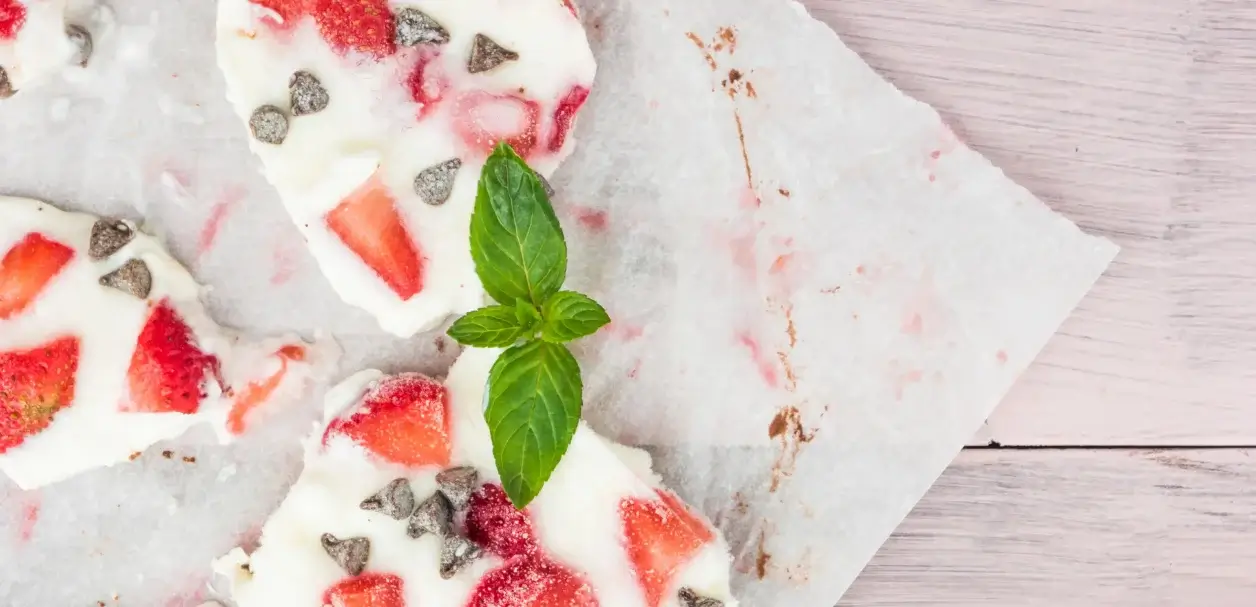Why, oh why, is Y so much trouble to read? Well, it’s because Y can be both a consonant AND a vowel. When Y is at the beginning of a word, it is typically a consonant and makes a hard /y/ sound, as in yak, yogurt, yarn and yum. When Y is in the middle of a word, it often makes the short /i/ sound, as in myth. When it is at the end of a word, Y makes either the long I or long E sounds, as in fly, cry, and funny. For a young child, Y’s chameleon-like ways can be confusing.
So, in this recipe, let’s focus on and reinforce just one of the sounds Y makes—the consonant sound. We’ll learn about what makes Y act as a consonant and make some delicious yogurt bark while we learn. With a little luck, this fun activity together and yummy recipe will have your child yearning for more learning!
To begin, print the recipe from the Read With Me Recipe Book (see below). Then, before you start cooking, demonstrate how Y sounds at the beginning of the word. Tell your child that Y at the beginning of a word is a consonant. (The city name Ypsilanti is one exception to the pattern.) List other consonant letters with your child to compare (such as P, T, M, and N). Practice making the sounds together. Have some fun! Point out that “yippee” and “yay” start with Y as a consonant, too, and cheer together. Finally, ask your child to circle all the Y words they find in the recipe.
If they’re ready, you can also explain that Y can be a vowel, too. You can chat about and demonstrate the various vowel sounds it can make, then help them find an example in the recipe (honey).
Our Read-with-Me Recipe series features printable recipes that are easy for kids to make and read. Simple words and short sentences in an easy font set your little one up for reading success. Just print and read it together as you cook. (Scroll down for tips on reading it together and maximizing the learning.) The idea is to make it easy for you to mix reading and writing into everyday life with your kids. This kind of “everyday literacy” is key to raising thriving readers.
Browse our other Read with Me Recipes.
Tips for teaching reading with this recipe:
- Introduce your child to how recipes work. If you’re not sure they know them already, be sure to explain vocabulary like “ingredients” and other cooking terms. One of the biggest challenges for beginning readers—and most important oral language underpinnings of literacy—is just knowing and understanding all the words they’ll encounter in print.
- Watch out for specific words in the recipe they may not be familiar with, and give a simple definition.
- Keep an eye out for tricky-to-read words, such as “yogurt.”
- For little ones who aren’t reading much yet, just pointing out what you’re reading and emphasizing a few key words or letters is enough. If you make the recipe again, you can help them find the words you pointed out before.
- Use this as an opportunity to show them punctuation, as well as words and letters. Point to the commas, periods, or other punctuation marks, and explain what they mean.
- If they can’t read the recipe on their own, give them chances for success by asking them about what they do know, gently underscoring key knowledge. E.g., ask, How many Ys can you find in this recipe? Can you find consonant Y?
- For kids who are reading already, encourage them to read the recipe themselves. If they have trouble, just calmly help them with any words they can’t quite get. E.g., if they have trouble with the word “yogurt,” try covering “gurt” and helping them read just the first part of the word before you uncover the rest.
- Bring your patience. Give your child space to read a word (or identify a letter) before you jump in, but be prepared to help if they’re showing signs of frustration.
Yogurt Bark
- Yogurt
- Honey
- Berries
- Yummy extras: Nuts, chocolate, coconut, etc.
- Wax paper
- Cookie sheet
Step 1:
Put wax paper on your cookie sheet.
Step 2:
Mix a spoonful of honey with your yogurt.
Step 3:
Scoop the yogurt onto the wax paper. Make it flat.
Step 4:
Yay! It is time for berries. Put the berries on your yogurt how you like.
Step 5:
Add any extras you or your family think are yummy.
Step 6:
Put the cookie sheet in the freezer until the yogurt is hard.
Step 7:
Take the cookie sheet out and break the yogurt into big bits.
Yes! You have made yummy yogurt bark! Yippee!
Like this recipe? Share it!

